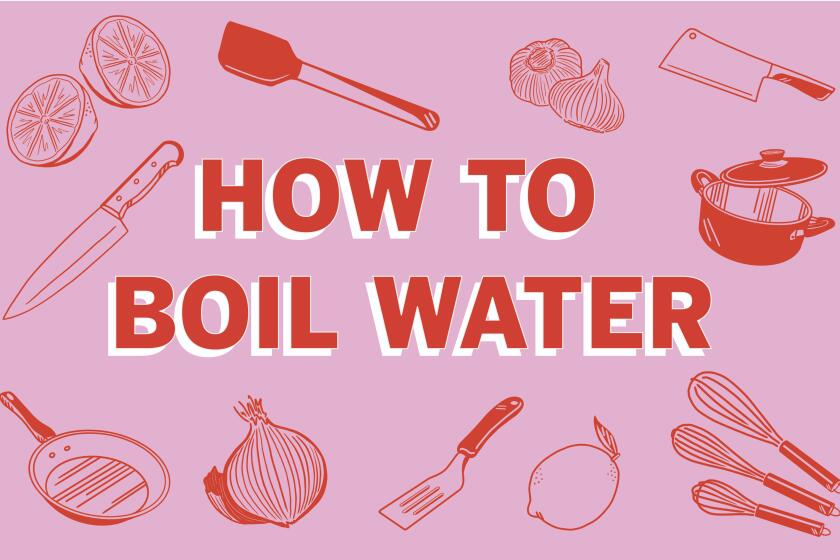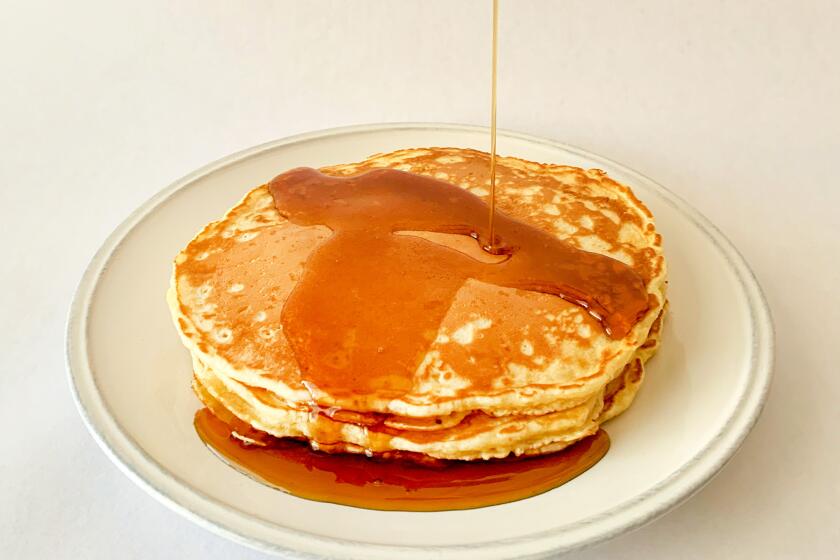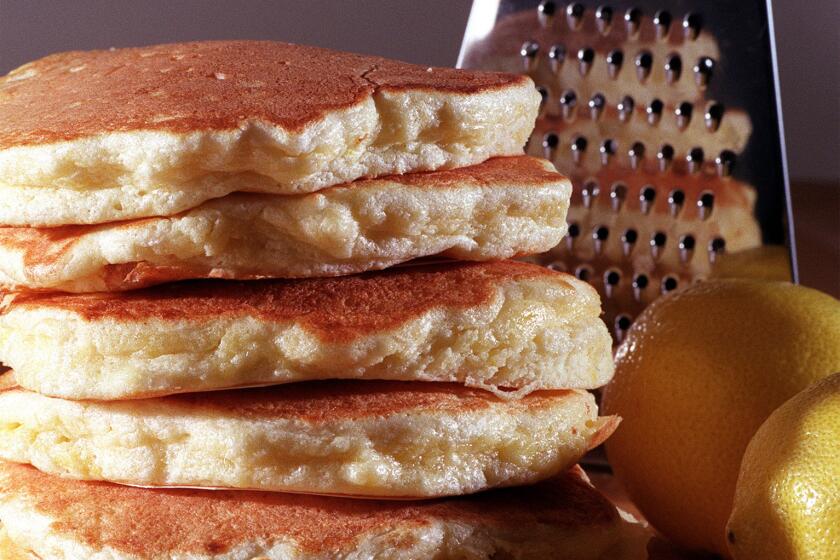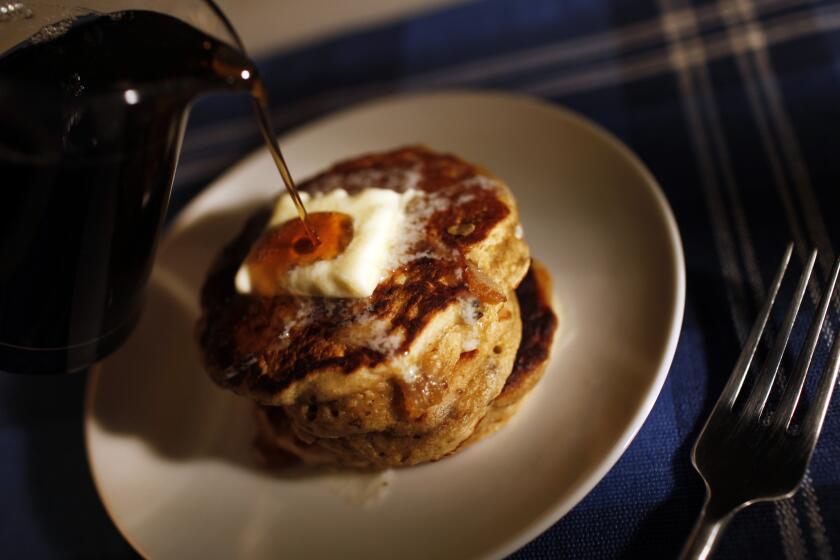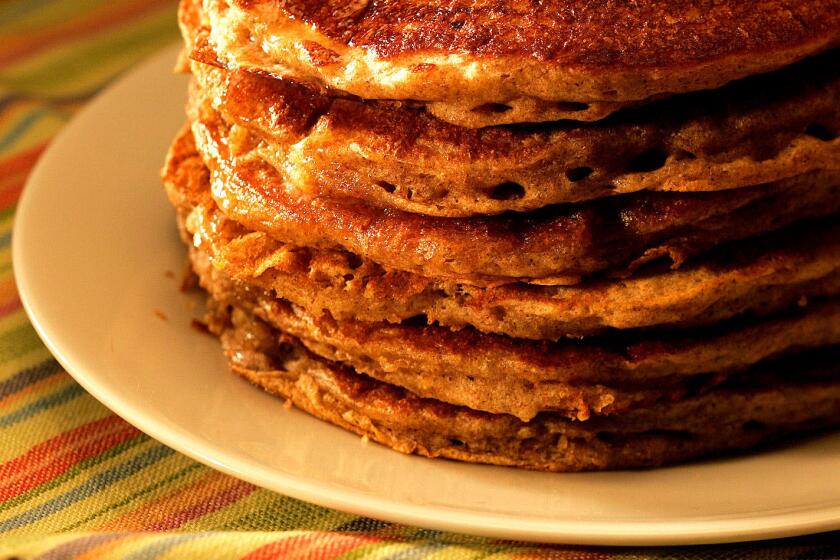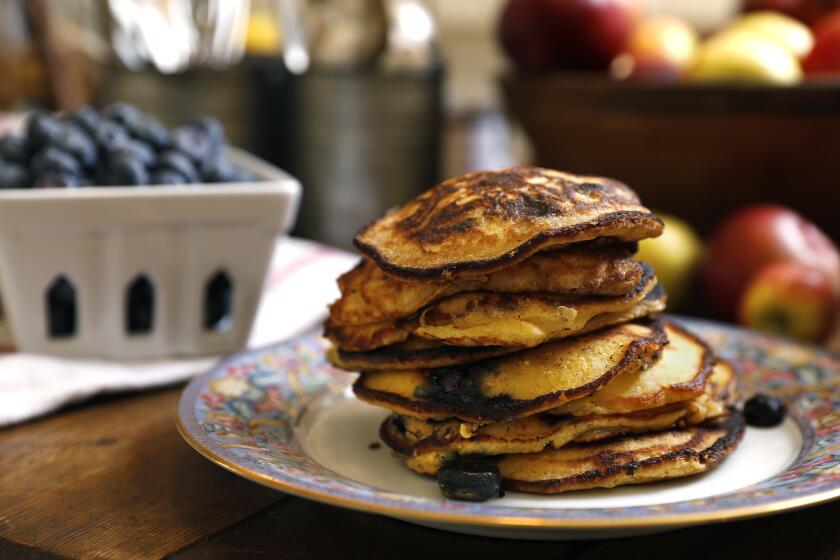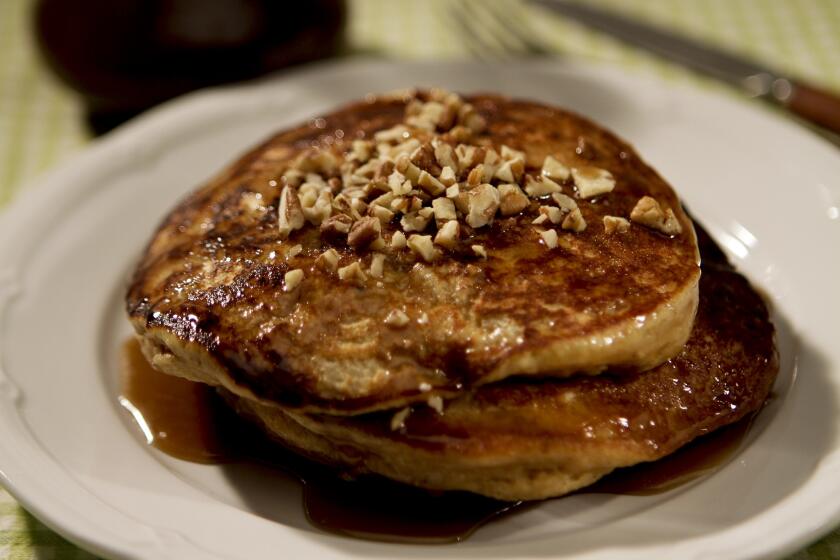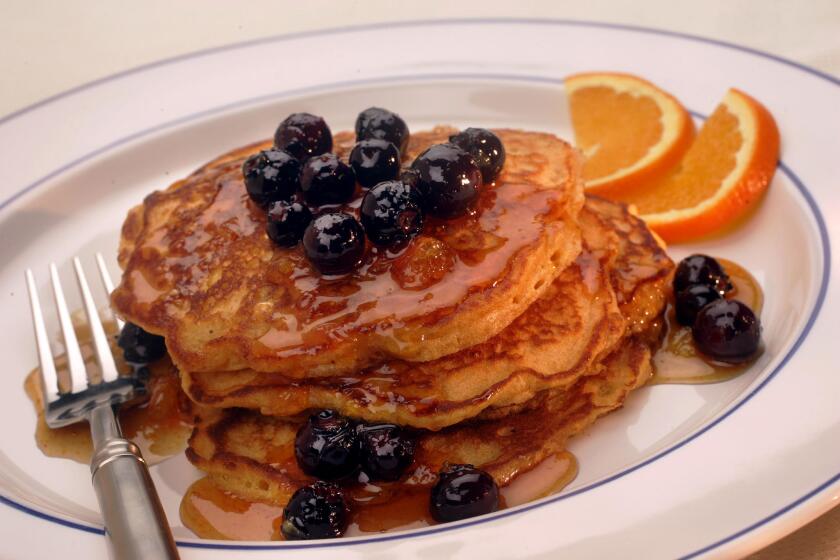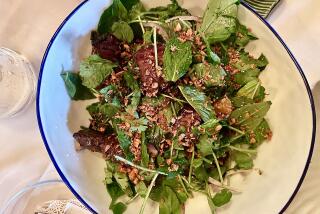Classic fluffy pancakes are best when you just do less
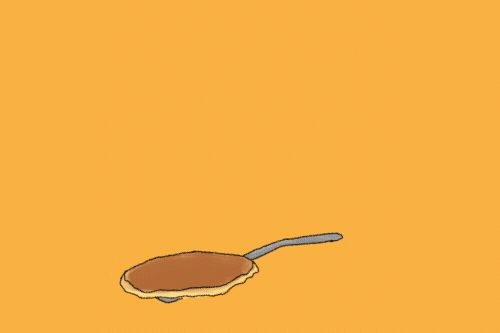
- Share via
With so many of you having to stay home and cook for the first time — ever or more than you have in a long time — we get that it can be overwhelming to have to cook all your meals from scratch. So, we’re here to get you started.
Each day we’re going to post a new skill here and go in detail about how to do it — a resource for cooking basics so you can get food on the table and get through this.
A series of simple tutorials for making some basic recipes at home.
Lesson 27: Pancakes
A common complaint about making pancakes is that you have to cook them one at a time, and by the time the last one is cooked the first ones are cold and tough. And though every recipe says you can keep pancakes warm in a low oven while making them as an optional step, I make it an essential part of my recipe. Some people just eat pancakes when out at a diner to avoid the whole production, but well, we can’t really do that now, can we? In any case, my secret is: Just make fewer pancakes.
Unless you’re feeding a crowd — which I bet many of us aren’t right now — pancakes are the perfect breakfast for two. I mix up a batter that makes only seven pancakes — one for a first-test pancake and then six to eat; that’s three per person — with a little extra to account for all the batter that clings to your scooping cup and the bowl. That way, from the first pancake to the last, only about 12 minutes goes by and the first pancakes I made are perfectly warm and tender in the oven, not getting too dried out or tough.
I start by making a batter with built-in texture insurance. Just like with my blueberry muffins, I add a little cornstarch to the batter to both cut the percentage of protein in the flour, thus making the pancakes more tender, and give them a finer crumb. Using powdered sugar also helps with the latter, but if all you have is granulated sugar, that works fine too. I whisk the liquid ingredients — full-fat milk and butter, please; these are pan-cakes, not pan-granolabars — into the dry ingredients very gingerly. You want some lumps in your batter because by the time you whisk it completely smooth, you’ve developed too much gluten and the pancakes will be tougher for it.
I don’t have a griddle so I cook my pancakes one at a time in a large nonstick skillet (if you have a griddle, though, please use it). Don’t try to cook more than one in a skillet; they inevitably do that thing where they touch at their edges and form oblong football shapes, instead of perfectly round disks, and can our OCD handle that right now? I like my pancakes to have that classic flat look like you get in diners so I cook them in a dry skillet, but if you like crunchy edges, you’ll want to fry them in butter (see “Variations” in the recipe below).
Now, let’s talk about that “first pancake.” There’s no mystery around why it comes out wonky and pale. The wonkiness comes from you not pouring batter into a hot pan regularly so you have get used to the movement. The paleness comes from your pan not being hot enough yet — hey, we’re all impatient so it’s OK. Let pancake nature take its course, then toss that first cake to the dog or a toddler, if you have one of those pulling on your leg.
With the first pancake out of the way, get to work. I made this batter to have the ideal viscosity to spread slowly on its own into a perfect round, but if yours comes out a little thick, use the bottom of the measuring cup to smooth its top after you pour it in the skillet. What you’re looking for is for the edges to lose their shine and for bubbles to appear on the top of the pancake. The bubbles will pop, and the loose batter will fill in the gaps. Once this stops happening, they’re ready to flip.
Flip with confidence: Tilt the skillet toward the pancake at the same time that you flip so the disk lands against the pan on an angle like a pro swimmer dives into a pool, not inelegantly like a belly flop.
Once the pancake is flipped, it will take about half or one-quarter of the time less than the first side to cook through. The first side will take around 1 minute, so start checking the second side at 30 seconds and don’t let it cook further than 45 seconds. It should be the same color as the top. Remove the whole skillet from the burner — this keeps it from overheating and throwing off your expert timing, burning the remaining pancakes — and slide the pancake between two kitchen towels on a baking sheet in a low oven (don’t worry; you’ve already set this up). There the pancake will stay warm and the towels will protect it from losing moisture.
Return the skillet to the burner and immediately add another scoop of batter. You stick to this exact routine and each pancake will be as perfect as the last. Once they’re all cooked, stack three to a plate — or more, or less; I don’t know your life! — swipe with a large knob of butter and cascade down several glugs of syrup. Smile smugly, knowing that everyone’s pancakes are hot and fluffy at the same time, no diner required.
Hot and Fluffy Pancakes
Want more pancake recipes?
Pluto's Lemon Cloud Pancakes
Oatmeal pancakes
Country Gourmet's whole wheat pancakes
Blueberry cornmeal pancakes
Highland Bakery's sweet potato pancakes with brown sugar butter sauce
Malted cornmeal pancakes with orange-blueberry syrup
More to Read
Eat your way across L.A.
Get our weekly Tasting Notes newsletter for reviews, news and more.
You may occasionally receive promotional content from the Los Angeles Times.
